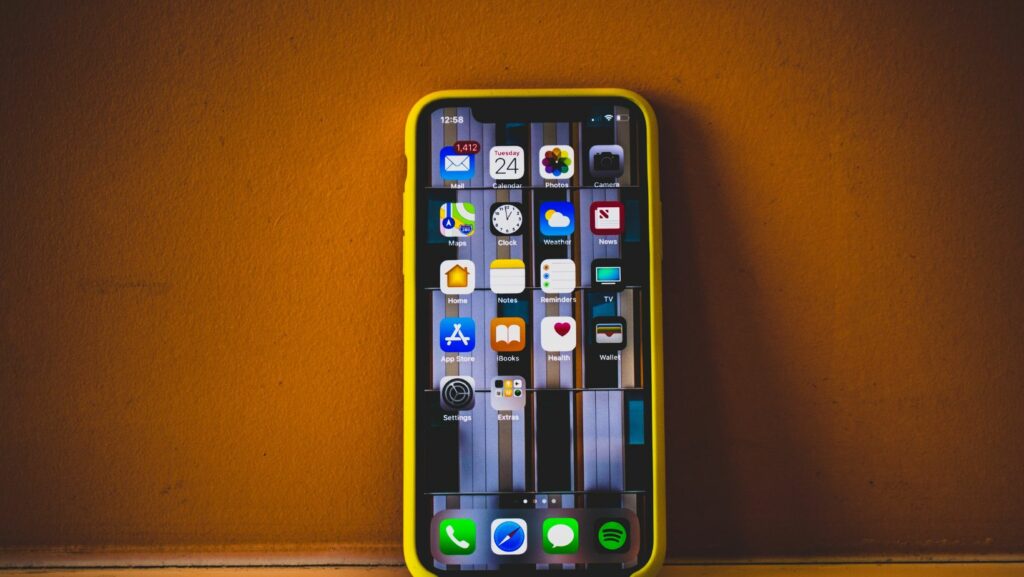According to Statista, mobile phones have turned out to be the dominant force in global digital commerce, driving the majority of site visits & online orders. As of the 1st quarter (in the year 2024), smartphones accounted for almost 77 % of retail website traffic globally and were responsible for producing 1/3 rds. of online shopping orders.
With the rising diversity of devices, the necessity to test site on mobile has become essential. Using a web browser online for testing enables testers to simulate multiple mobile environments, ensuring that the website runs consistently and meets the top standards of mobile users.
The Significance of Mobile-First Design
Mobile-first design is a tactic where the development and design procedure starts with the mobile version of a site before scaling up to big screens such as desktops and tablets. This approach is crucial as mobile devices account for an important section of internet usage. According to current stats, as of Q4 2023, around 96.3% of users worldwide accessed the internet through mobile phones, while ninety-four percent reported doing so through smartphones. This trend highlights the requirement for websites to be completely optimized for mobile gadgets to meet customer expectations & offer a smooth browsing experience.
Why Mobile Testing Matters?
This form of testing guarantees that your site functions appropriately across multiple OSs (operating systems) and devices. It includes testing the site’s usability, performance, and responsiveness on diverse mobile devices to determine and fix potential glitches before they influence the user experience. Given the diversity of mobile gadgets in use today, mobile testing is a complicated yet essential task. It meets end-users requirements using automated testing or manual testing techniques and tools.
Mobile users expect intuitive navigation, fast load times, & a smooth user interface. A website that does not run well on mobile devices risks losing a noteworthy section of its audience. Hence, comprehensive mobile testing is crucial to ensure that your site meets the higher standards of current mobile users.
How Can I Efficiently Test My Website on Mobile Devices?
To smartly test your site on diverse mobile devices, follow these effectual strategies:
- Use Real-time Device Testing: Test your website on real-world mobile devices to notice how it runs in real-time situations. This offers the actual outcomes as it takes into account touch interactions, hardware skills, and device-centric behaviors.
- Use Simulators and Emulators: Simulators and emulators are beneficial for rapid tests across varied OSs and devices. They enable you to simulate multiple screen resolutions, sizes, and platforms without demanding physical devices.
- Leverage Web Browser Online Tools: Online browser tools, such as LambdaTest, allow you to test your site on an extensive series of mobile browsers and OSs. Such platforms offer access to a cloud-centric grid of actual devices, enabling you to perform cross-device and cross-browser testing efficiently.
- Test Across Diverse Network Conditions: Mobile users might access your website over changing network speeds, from slow 3G connections to fast Wi-Fi. Make use of tools to simulate diverse network conditions and confirm your website loads rapidly and functions well even under restricted bandwidth.
- Check for Responsiveness: Confirm your website adapts smoothly to various screen sizes & orientations by testing its responsiveness. Check that all components, like text, buttons, and images, resize and reposition appropriately on smaller screens.
- Test for Touch-based Interactions: Mobile gadgets depend immensely on touch navigation. Make certain that all touch interactions, such as pinching, swiping, and tapping, function as intended. Check that clickable components are properly sized and spaced to avert accidental clicks.
- Device-Centric Traits: If your website uses device-centric traits such as a camera, accelerometer, etc., you need to confirm these traits function properly across all gadgets.
- Cross-Browser Compatibility: Test your website on diverse mobile browsers, such as MS Edge Firefox, Safari, and Chrome, to ensure steady performance. The cross-browser test assists in finding and addressing any discrepancies on various browsers.
By using these tactics, you can completely test your website on mobile gadgets, ensuring a seamless experience for all mobile users.
What Challenges are Linked with Mobile Testing?
Mobile tests come with various challenges because of the diversity of devices, OSs, and user environments. Here are the crucial challenges:
- OS Variations: Mobile gadgets run on diverse OSs like iOS, Android, & Windows, each with several versions in use. Testing across multiple OS versions ensures compatibility but it adds intricacy to the test process.

- Network Conditions: Mobile users access the net under multiple network settings, ranging from slower 2G or 3G connections to high-speed Wi-Fi. Testing how your website performs under diverse network conditions and speeds is critical plus challenging.
- Touch-based Interactions: Contrasting PCs that rely on keyboard and mouse inputs, mobile gadgets use touchscreen interactions. Confirming these interactions like tapping, pinching, & swiping) function appropriately across diverse gadgets necessitates complete tests.
- Device Fragmentation: There is a set of diverse mobile devices with varied hardware settings, screen sizes, and OSs. Ensuring that your website/ app works seamlessly across all these gadgets is significant.
- Safety Concerns: Mobile gadgets often connect to unsafe networks, making them susceptible to safety threats. Confirming that your app is safe across different network settings & gadgets is crucial, but it adds another layer of intricacy to testing.
- Battery Drain: Mobile websites and apps need to be optimized to reduce battery consumption. Testing the power consumption of your application or website on various gadgets is an exceptional challenge in mobile tests.
- Third-Party Incorporations: Several mobile apps rely on 3rd party solutions like cameras, GPS, or payment gateways. Testing these incorporations across multiple gadgets & ensuring their consistency is another noteworthy challenge.
- Regular Updates: Mobile gadgets and OSs are regularly updated. Keeping up with these updates and confirming your app remains compatible with the most recent versions can be tricky.
- UI Consistency: Ensuring that the user interface remains consistent across diverse devices, screen resolutions, and sizes is difficult. Inconsistent User Interface can negatively influence user experience.
- Compliance and Data Privacy: Mobile apps often gather and process sensitive user information. Certifying compliance with data privacy regulations such as CCPA or GDPR across diverse devices and regions adds intricacy to mobile tests.
Most Practices for Mobile-First Tests
To confirm a successful mobile-first user experience, you need to follow these strategies and best practices to test the site on mobile:
- Adopt a Mobile-First Approach: Begin the development and design procedure with the mobile version of your site. This approach guarantees that the most crucial functionalities as well as traits are optimized for users from the outset.
- Use Real-Device Tests: Test your website on real mobile gadgets to check how it runs in real-time settings. This offers the most accurate outcomes, as it considers touch interactions, hardware capabilities, and device-centric behaviors.
- Leverage Browser Tools: Online web browser online tools, such as LambdaTest, enable you to test your site on an extensive suite of mobile browsers and OSs. Such platforms offer access to a cloud-powered grid of real-world devices, allowing effective cross-device and cross-browser testing.
- Test Across Diverse Network Conditions: Mobile users might access the website at diverse network speeds, from slower 3G connections to fast Wi-Fi. Utilize tools to simulate diverse network conditions and confirm your website loads rapidly & functions incredibly under all situations.
- Confirm Responsive Design: Make certain your website adapts seamlessly to varied screen sizes & orientations by testing its responsiveness. Validate that all components like images, buttons, and text, repositioned and resized appropriately on small screens.
- Test for Touch Interactions: Confirm that all touch interactions, such as pinching, swiping, & tapping, function as intended. Check that clickable elements are properly sized and spaced to control accidental clicks.
- Cross-Browser Compatibility: Test your website on several web browsers, like Safari, Google Chrome, MS Edge, and Mozilla Firefox to ensure steady performance. Cross-browser tests help detect & fix any flaws in the website.
- Optimize for Performance: Optimize your website for speedy load times & reduced resource usage. Minify code, compress images, and use lazy loading methods to enhance performance on mobile devices.
The Role of LambdaTest in Mobile Testing
LambdaTest is a cloud-centric test platform that provides robust traits for mobile testing. It enables you to test your site on a series of mobile devices & browsers, confirming cross-browser compatibility & a smooth user experience. With this pristine platform, you can simulate diverse network conditions, test on actual devices, and run test automation using Selenium. This comprehensive test approach assists you in detecting and fixing glitches early in the development process, guaranteeing that your site is fully optimized for users.
How LambdaTest Assists in Testing Sites on Mobile
Here’s how LambdaTest can assist:
- Real Device Tests: It offers access to a cloud-powered grid of real-time mobile devices, enabling you to test your website in real situations. This guarantees that your site runs as expected across diverse OSs & hardware configurations.
- Responsive Tests: It provides tools to test your site’s responsiveness across diverse screen sizes & orientations. You can check that all components on your website like text, images, and buttons, resize and reposition properly on smaller screens.
- Cross-Browser Tests: With LambdaTest, you can test your website on several mobile browsers, counting Safari, Google Chrome, Firefox, and Microsoft Edge. This guarantees constant appearance and performance across every major browser.

- Network Simulation: It also enables you to simulate diverse network conditions, allowing you to test how your website performs under several bandwidths. This trait is crucial for optimizing your website’s performance and load time on mobile devices.
- Touch Interaction Tests: With real device tests, you can guarantee that all touch interactions on your website function as intended, offering an intuitive and seamless user experience.
- Automated Tests: It also supports automation tests with different tools such as Selenium, enabling you to streamline the entire test process and confirm that your site is constantly tested across various devices and browsers.
- Geolocation Testing: Test your website from diverse geographical locations utilizing LambdaTest’s geolocation tests feature. This is essential for understanding how your site runs in several regions & under multiple network settings.
Conclusion
In an era where mobile net use is at an all-time high, confirming that your site delivers a smooth mobile-first user experience is essential. By leveraging real device tests and using online tools like LambdaTest, you can guarantee that your website meets the higher standards of today’s mobile users. The complete and thorough mobile test isn’t simply about ensuring functionality; it is mainly about delivering a superior user experience, no matter what gadget they use.
Frequently Asked Questions (FAQs)
- How can I intelligently test my site on diverse mobile devices?
To smartly test your site, you must use a blend of real device testing & simulators or emulators. Real device test guarantees that your website runs perfectly on real hardware, while emulators enable you to rapidly test across a set of screen sizes and device types. Tools such as online web browsers for mobile tests can simulate varied environs, aiding you in detecting & addressing potential issues.


